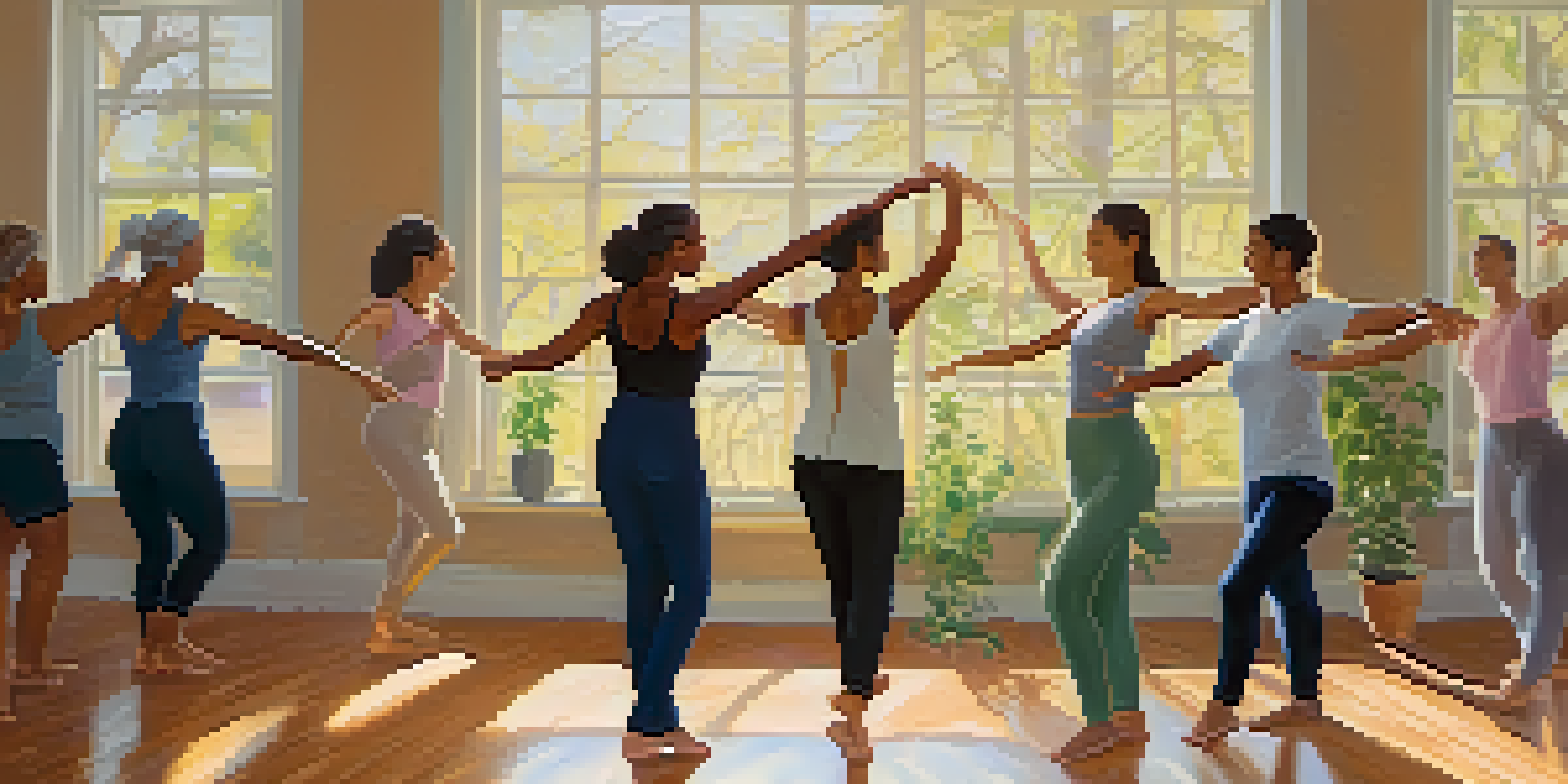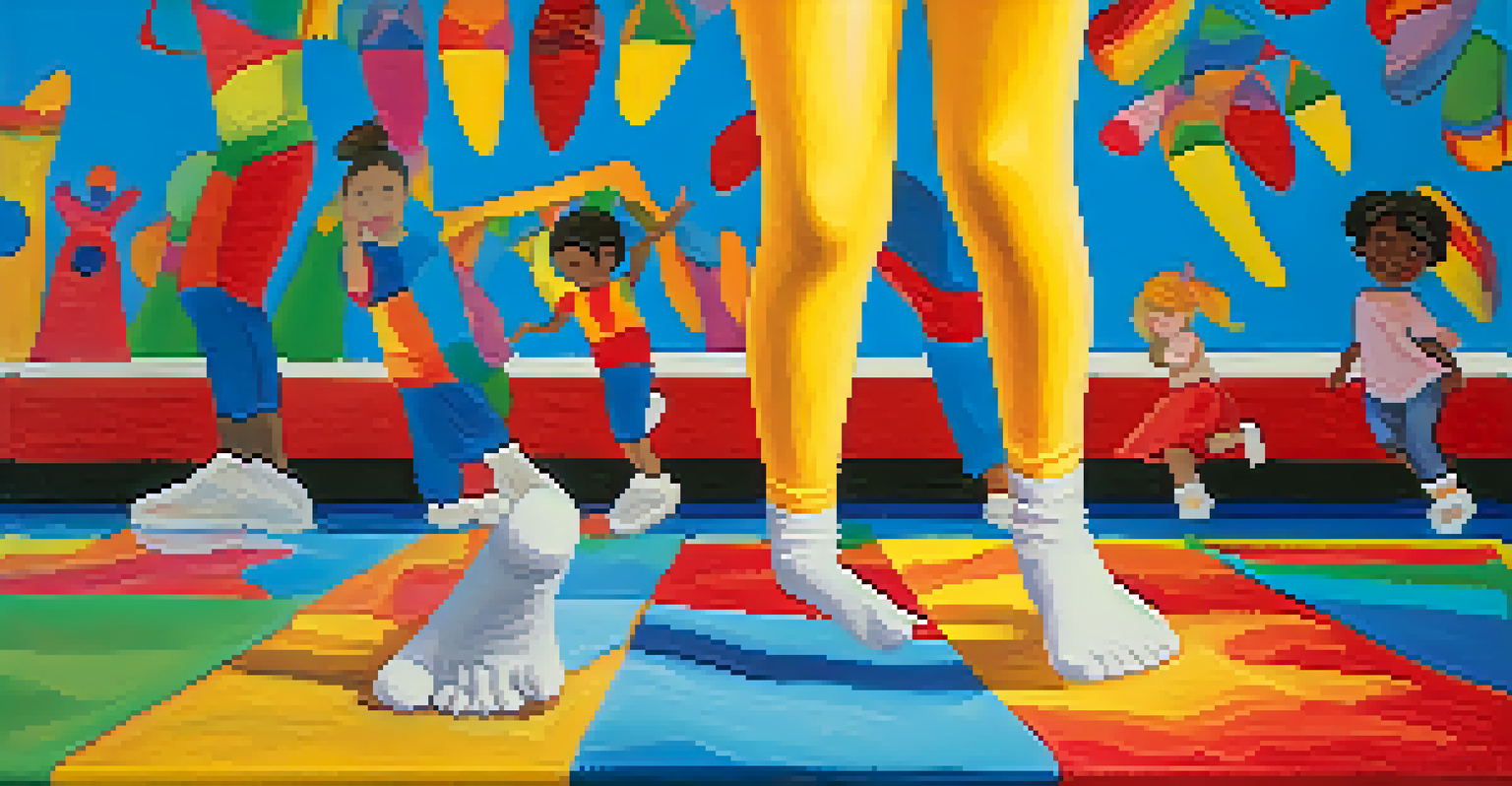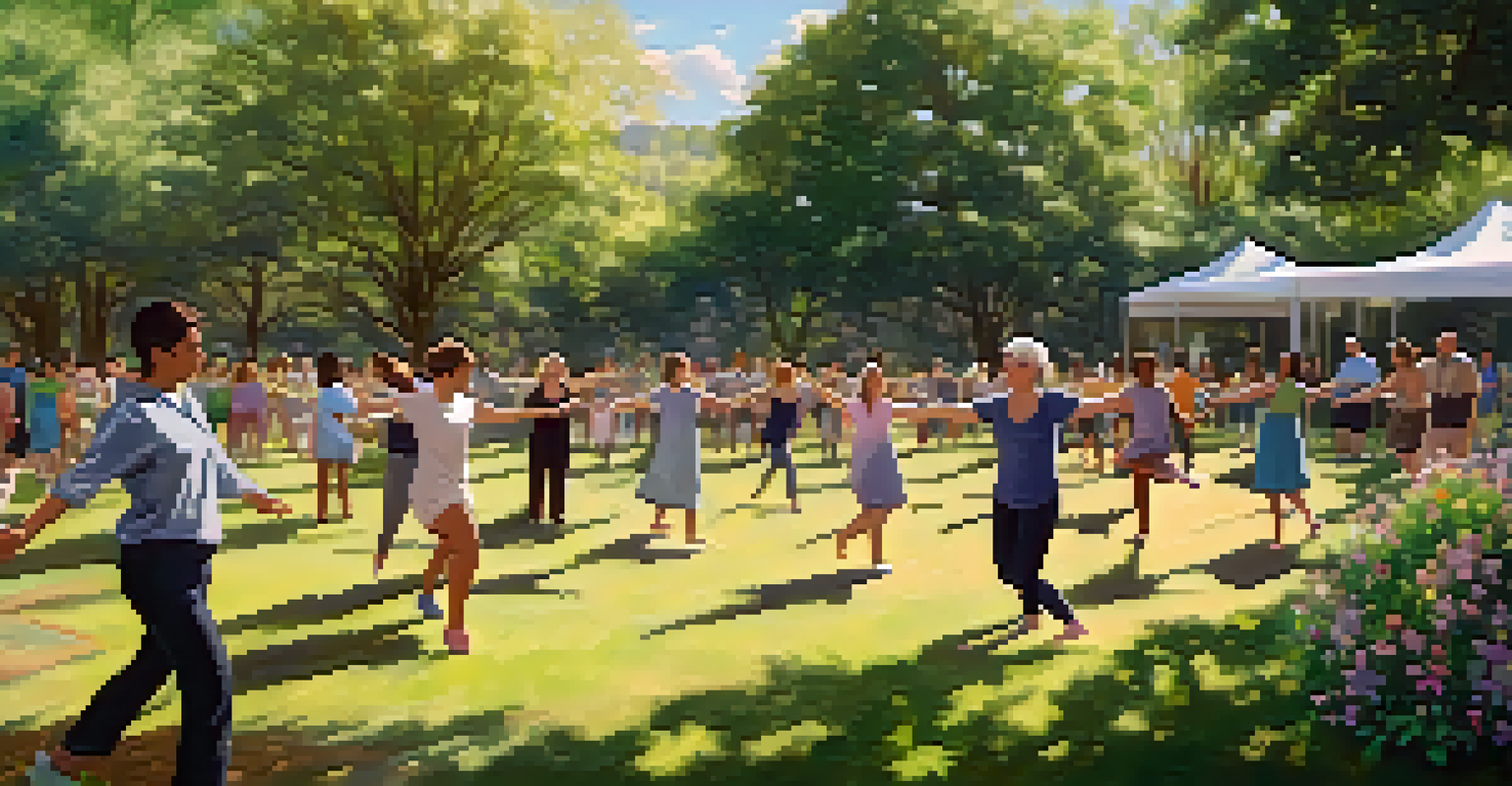Dance Therapy: Healing Through Movement and Activism

Understanding Dance Therapy and Its Origins
Dance therapy, also known as dance/movement therapy (DMT), is a creative approach that uses movement to enhance physical, emotional, and mental well-being. This therapeutic practice emerged in the mid-20th century when pioneers recognized the link between movement and emotional expression. By allowing people to communicate through their bodies, dance therapy offers a unique path to healing that transcends words.
Dance is the hidden language of the soul.
The roots of dance therapy can be traced back to various cultures that have long utilized movement as a form of expression and healing. For instance, traditional healing practices in African and Native American cultures often incorporate dance to promote wellness. These historical perspectives enrich modern dance therapy, emphasizing its role as a universal language that fosters connection and healing.
As a result, dance therapy has gained recognition in clinical settings, helping individuals cope with trauma, anxiety, and depression. By engaging with their bodies, participants can explore emotions more freely and gain insights that might be difficult to articulate otherwise. This body-mind connection is central to the healing process, making dance therapy a valuable tool in mental health care.
The Therapeutic Benefits of Movement
One of the most significant benefits of dance therapy is its ability to reduce stress and anxiety. When individuals engage in movement, they often release pent-up emotions, which can lead to a sense of relief and relaxation. This physical release is crucial because it allows participants to transform negative feelings into something constructive, promoting emotional resilience.

Moreover, dance therapy encourages self-expression and creativity, which can be particularly empowering for individuals struggling with mental health issues. By exploring different movement styles, participants can discover new ways to express themselves and connect with their emotions. This process can be liberating, as it provides a safe space to explore feelings that may have been suppressed or ignored.
Dance Therapy Enhances Well-Being
Dance therapy uses movement to promote physical, emotional, and mental health, fostering a unique healing process.
Additionally, the social aspect of dance therapy fosters a sense of community and support among participants. Group sessions create opportunities for connection, allowing individuals to share their experiences and learn from one another. This camaraderie can be invaluable, as it reinforces the idea that they are not alone in their struggles, ultimately enhancing the healing process.
Dance Therapy for Trauma Recovery
Dance therapy is particularly effective in helping individuals process and recover from trauma. Research has shown that movement can activate the body's natural healing mechanisms, allowing people to reconnect with their bodies after experiencing distressing events. This reconnection is crucial, as trauma often leads individuals to dissociate from their physical selves, making healing challenging.
Movement is a medicine for creating change in a person's physical, emotional, and mental states.
Through structured movement exercises, dance therapy encourages individuals to explore their trauma in a safe and controlled environment. Participants can express their feelings through dance, which can often be more accessible than verbal communication. This approach helps them regain a sense of agency and control over their bodies, facilitating the healing journey.
Furthermore, the creative nature of dance therapy provides a unique way for individuals to reframe their narratives. By embodying their experiences through movement, they can gain new insights and perspectives on their trauma. This process not only aids in healing but also empowers individuals to reclaim their stories and foster resilience.
Incorporating Activism into Dance Therapy
Dance therapy can also serve as a powerful form of activism, as it promotes awareness and social change. Many practitioners integrate themes of social justice into their sessions, using movement to address issues such as inequality, discrimination, and trauma. By doing so, they create a platform for participants to express their concerns and advocate for change through their bodies.
This connection between dance therapy and activism is particularly relevant in today's world, where many individuals feel overwhelmed by societal challenges. By engaging in movement that reflects their experiences, participants can channel their frustrations and hopes into constructive action. This not only fosters healing but also cultivates a sense of purpose and community among those involved.
Movement Aids Trauma Recovery
Engaging in dance therapy helps individuals reconnect with their bodies and process trauma in a safe environment.
Moreover, dance therapy can raise awareness of various social issues by showcasing performances that highlight these themes. These performances can serve as a catalyst for conversations, bridging the gap between personal experiences and broader societal challenges. This combination of healing and activism underscores the transformative power of dance therapy.
Dance Therapy for Children and Adolescents
Children and adolescents can greatly benefit from dance therapy, as it provides a playful and engaging outlet for self-expression. Young people often struggle to articulate their feelings, and dance therapy offers a creative way to explore their emotions. Through movement, they can process experiences such as bullying, family changes, or anxiety in a safe and supportive environment.
In group settings, dance therapy encourages social interaction and teamwork, which are essential for developing healthy relationships. As children learn to collaborate through movement, they build trust and empathy with their peers. This sense of community can be particularly beneficial for those who may feel isolated or misunderstood, fostering a supportive network.
Additionally, the physical aspect of dance therapy can improve coordination, body awareness, and overall fitness in children. These skills are vital for their development and can enhance their self-esteem. By promoting a positive body image and encouraging self-acceptance, dance therapy can contribute to healthier emotional and physical growth during these formative years.
The Role of Professionals in Dance Therapy
Dance therapy should always be facilitated by trained professionals who understand the complexities of movement and mental health. These practitioners combine knowledge of psychology, dance, and therapeutic techniques to create a safe space for participants. Their expertise is crucial in guiding individuals through the healing process while respecting each person's unique journey.
In addition to facilitating sessions, dance therapists often collaborate with other mental health professionals to provide comprehensive care. This multidisciplinary approach ensures that participants receive the support they need, whether they are dealing with trauma, anxiety, or other mental health challenges. By working together, these professionals can create tailored treatment plans that address the specific needs of each individual.
Dance Therapy Fosters Community Action
By integrating social justice themes, dance therapy empowers participants to advocate for change and express their experiences.
Furthermore, ongoing training and education are essential for dance therapists to stay updated on best practices and emerging research. This commitment to professional development not only enhances their skills but also enriches the therapeutic experience for participants. Ultimately, the expertise of dance therapists plays a vital role in the effectiveness of dance therapy as a healing modality.
The Future of Dance Therapy and Social Change
As awareness of mental health issues continues to grow, the future of dance therapy looks promising. Its unique blend of creativity and healing resonates with many individuals seeking alternative approaches to mental wellness. With more practitioners entering the field and research supporting its efficacy, dance therapy is poised to become an integral part of holistic mental health care.
Moreover, the intersection of dance therapy and social activism is likely to expand, as practitioners increasingly recognize the importance of addressing societal issues within their work. By promoting social justice through movement, dance therapists can empower individuals to advocate for themselves and their communities. This synergy between healing and activism can lead to transformative change on both personal and societal levels.

In conclusion, dance therapy offers a powerful avenue for healing and self-expression, with the potential to create meaningful social change. As more individuals embrace this dynamic approach, we can look forward to a future where movement not only heals but also inspires action. By harnessing the power of dance, we can collectively work towards a healthier, more equitable world.